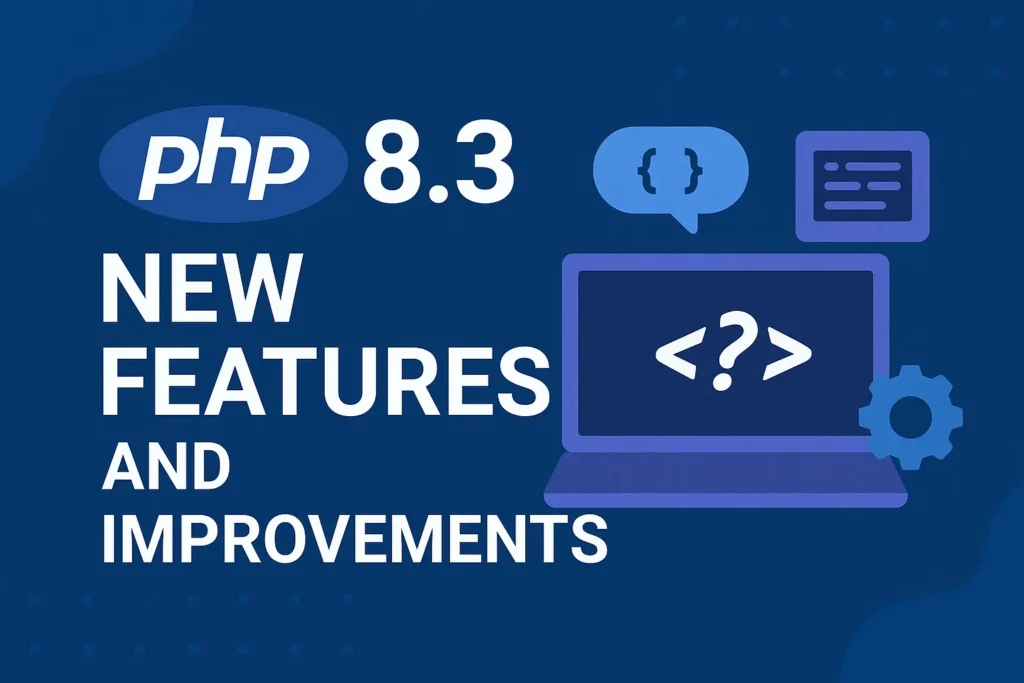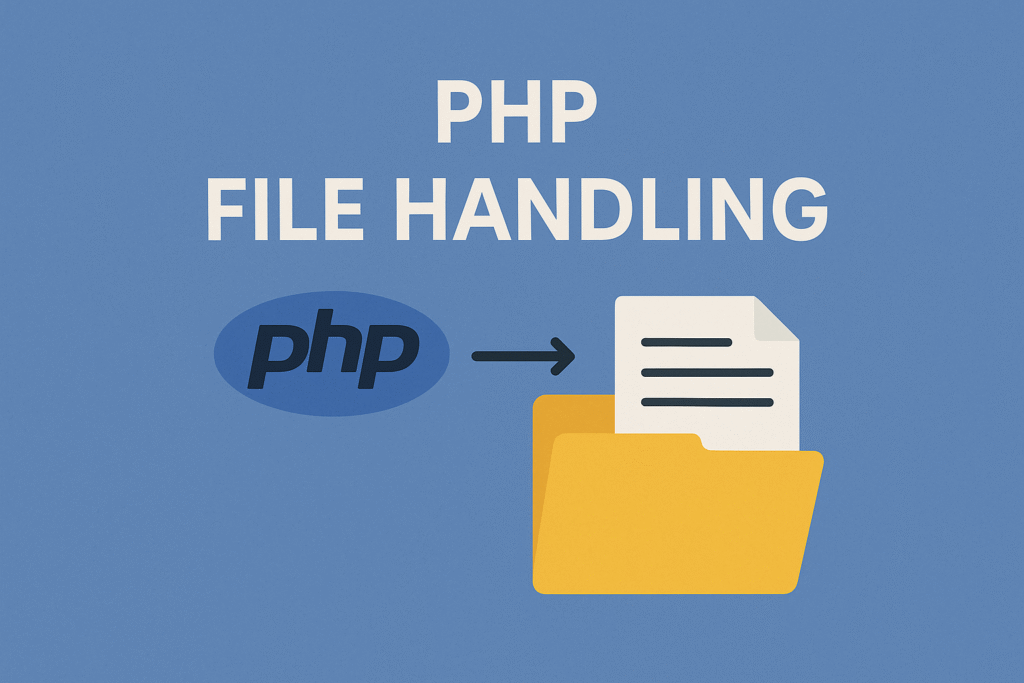PHP Introduction: What is PHP, Features, Syntax, and Benefits Explained (2025)
Core PHPMar 09, 2015

In this article, we’ll see PHP Introduction.
Table of Contents
It is one of the most widely used server-side scripting languages on the web today. Originally developed in 1994 by Rasmus Lerdorf, it stands for Hypertext Preprocessor (it’s a recursive acronym). It is primarily used to develop dynamic and interactive web pages. It’s open-source, easy to learn, and integrates seamlessly with HTML, databases, and various web technologies — making it a go-to choice for developers worldwide.
Whether you’re building a simple contact form, a content management system like WordPress, or a large-scale eCommerce website, It provides the foundation for robust web applications. In this article, you’ll learn what PHP is, how it works, its features, advantages, and basic syntax to help you get started.
What is PHP?
It is a server-side scripting language designed for web development but also used as a general-purpose programming language. It runs on the server, and the output (typically HTML) is sent to the browser. This means users never see the PHP code — they only see the generated web page.
Here’s how it works:
-
The client (browser) requests a PHP page from the server.
-
The server processes the PHP code.
-
The server sends the resulting HTML output to the browser.
This server-side processing allows developers to create dynamic, data-driven web pages that respond to user inputs, interact with databases, and perform calculations behind the scenes.
The PHP Group now produces the PHP reference implementation. It was originally an abbreviation of Personal Home Page, but it now stands for the recursive initialism PHP: Hypertext Preprocessor.
- PHP stands for PHP: Hypertext Preprocessor
- It is a server-side scripting language, like ASP
- PHP scripts are executed on the server
- It supports many databases (MySQL, Informix, Oracle, Sybase, Solid, PostgreSQL,
Generic ODBC, etc.) - It is open-source software (OSS)
- It is free to download and use
Why Use It?
It remains a top choice for web development due to its simplicity, scalability, and strong community support. Here are some reasons why you should learn it:
-
Easy to Learn:
It has a syntax similar to C and Java, making it accessible to beginners with prior programming experience. Even if you’re new to coding, PHP’s straightforward syntax makes it a great starting point. -
Open Source:
It is completely free. Developers can use, modify, and distribute it without any licensing cost, making it ideal for small businesses and startups. -
Database Integration:
It works seamlessly with databases like MySQL, PostgreSQL, and SQLite. This makes it perfect for developing applications that store and retrieve data efficiently. -
Cross-Platform Support:
It runs on major operating systems like Windows, Linux, and macOS, and is supported by all leading web servers, including Apache and Nginx. -
Large Community & Frameworks:
It has a huge global community, with frameworks such as Laravel, CodeIgniter, Symfony, and CakePHP that simplify development and enforce best practices.
How It Works
When you access a PHP web page, the server handles all code before sending the final output (HTML) to the browser. Here’s a quick overview:
- The browser requests a .php file.
- The server identifies and executes PHP code embedded within the file.
- The PHP script interacts with the database or performs other operations.
- The final result (HTML, JSON, etc.) is sent back to the browser.
This approach ensures that sensitive operations (like authentication and database handling) remain secure on the server.
Basic PHP Syntax
A PHP file can contain HTML, CSS, JavaScript, and PHP code. The code is enclosed within special tags:
Explanation:
- <?php starts the PHP code.
- echo outputs text to the web page.
- ?> ends the PHP code.
When you open this file in a browser (via a server like Apache or XAMPP), you’ll see Hello, World! as output.
Features
- Server-Side Processing: Emphasize that It is executed on the server, enabling the generation of dynamic web content before it reaches the client’s browser.
- Easy Integration: Discuss Its seamless integration with various databases (MySQL, PostgreSQL, etc.), web servers (Apache, Nginx), and other technologies (JavaScript, HTML, CSS).
- Simplified Syntax: Explain that Its syntax is inspired by C, Java, and Perl, making it relatively easy to learn and write code.
- Extensive Functionality: Mention Its vast standard library, offering an array of built-in functions for various tasks, such as string manipulation, file handling, and database connectivity.
- Scalability and Flexibility: Discuss Its ability to handle high traffic and scale efficiently, making it suitable for both small projects and large enterprise-level applications.
- It is well-supported. There is a large community of developers who are constantly creating new tools and resources. This makes it easy to get help when you need it.
Advantages and Disadvantages
Advantages
- Open source: It is developed and maintained by a large group of PHP developers, this will help in creating a support community, and abundant extension library.
- Speed: It is relative fast since it uses many system resources.
- Easy to use: It uses C-like syntax, so for those who are familiar with C, it’s very easy for them to pick up and it is very easy to create website scripts.
- Stable: Since it is maintained by many developers, so when bugs are found, they can be quickly fixed.
- Powerful library support: You can easily find functional modules you need such as PDF, Graph, etc.
- Built-in database connection modules: You can connect to the database easily using It, since many websites are data/content-driven, we will use databases frequently, this will largely reduce the development time of web apps.
- Can be run on many platforms, including Windows, Linux, and Mac, so it’s easy for users to find hosting service providers.
Disadvantages
- Security: Since it is open-sourced, so all people can see the source code, if there are bugs in the source code, it can be used by people to explore the weakness of It
- Not suitable for large applications: Hard to maintain since it is not very modular.
- Weak type: Implicit conversion may surprise unwary programmers and lead to unexpected bugs. For example, the strings “1000” and “1e3” compare equal because they are implicitly cast to floating-point numbers.
Popular Applications Built with It
Many leading platforms are powered by it:
- WordPress – The most popular CMS.
- Facebook (initially built in It)
- Wikipedia
- Drupal
- Magento – eCommerce platform.
These examples show It’s scalability and real-world impact.
Conclusion
It continues to be a cornerstone of web development due to its simplicity, versatility, and vast community support. Despite the rise of newer languages, It remains relevant, especially in powering CMS platforms like WordPress and Laravel-based web applications.
If you’re just starting in backend development, learning it is one of the smartest decisions you can make. It lays a strong foundation for understanding web servers, databases, and dynamic content generation — skills that remain essential in today’s digital world.


